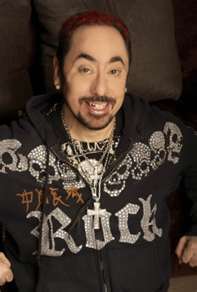
Robert Pattinson is famous for Twilight. But like any actor he wants to show that he’s not just the captain of Team Edward. Christoph Waltz won an academy award, but he needs to show he can work in Hollywood, so why not play a slightly less evil character than last time? Reese Witherspoon is a bankable actress – or at least used to be – and who else are you going to cast if Angelina Jolie is out of your price range? Francis Lawrence is a director who wants to show he’s not just a genre filmmaker after Constantine and I Am Legend. You can clearly see everyone’s motivations for making the movie. That the end results are half-cooked is also not surprising. Our review of Water for Elephants on Blu-ray follows after the jump.
The film starts in present day with Hal Holbrookplaying the older version of Robert Pattinson’s character. R-Patz stars as Jacob, who sees his whole life ahead of him until a car crash kills his parents and leaves him penniless. He was studying to be a veterinarian, but with no way to finish school he jumps a train. It happens to be a circus train for the Benzini Brothers travelling circus, which is run by August (Waltz). Jacob gets to working, but his skills with animals lead him to a job as the circus’s vet, and that gets him closer to Rosie (Witherspoon), who rides the show horse that Jacob quickly diagnoses as terminal.
Needing a new star attraction, August finds Rosie, the titular elephant. August uses violence to move the mammal, Jacob uses tenderness. Jacob is also attracted to Rosie, and though August courts this attraction by keeping Jacob close, he also doesn’t approve of it. So tensions are rising much like the show’s attendance.
Water for Elephants is beautifully shot, but wounded – if not ruined – by the need for digital effects to compensate for period locations. There are a number of train shots that would have been majestic if they were live action, but digitally enhanced shots have all the romanticism of the 1’s and 0’s they’re made of. There’s no majesty in that sort of substitution when you could watch something like Days of Heaven.
Perhaps with stories like this, the only way to go is to pretend that they’ve never been told before. But that’s not the approach here; it feels like everyone is going through the motions. The film is ultimately undone by its casting, and it’s not Robert Pattinson’s fault – Reese Witherspoon is so painfully wrong for the role. As a performer she’s rarely conveyed much sensuality, and though she’s a fine actress and capable at both heavy drama and light comedy, as the role of the mysterious and sexual woman in the middle of a triangle, she gives off all the heat of a well-used computer. The story might be familiar, but if there was anyone in the role who could project knowing and or sensual it would make this at least something to watch. But with this casting of talents based more on availability and awareness than how they interact, you watch three actors you never believe want to or did have sex with each other.
And that’s the make or break with films like this, and it’s so strange that the system is so backwards that the pieces were put in place without seeing how they fit. You can enjoy watching Waltz have fun with the role, and he’s not close to phoning it in, and Pattinson and Witherspoon are trying, but it’s a nothing film. Something sure to be forgotten but all of the most faithful of readers.
Twentieth Century Fox’s Blu-ray isgorgeous no doubt. The Blu-ray comes with a digital copy, and the film is presented in widescreen (2.35:1) and in 5.1 DTS-HD master audio. The film comes with a commentary by director Francis Lawrence and screenwriter Richard LaGravanese, and seven featurettes. “Raising the Tent” (16 min.) is the standard making of with comments from the cast and crew, “Secrets of the Big Top” (12 min.) gets circus historians to talk about the film and circuses, “The Star Attraction” (9 min.) focuses on the film’s elephant and the work that went into getting the elephant into the movie, “The Traveling Show – Page to Screen” (9 min.) puts author Sara Guen and the story in the spotlight, “Working without a Net: Visual Effects for Water for Elephants” (23 min.) shows where all the digital trickery was done. Robert Pattinson (4 min.) and Reese Witherspoon (3 min.) get their own “they were great to work with” featurettes, and the set rounds out with a theatrical trailer.
















